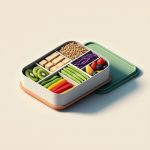Buckle up, soda lovers! We’re about to embark on a fizzy adventure, exploring the dynamic world of can soda. From timeless classics to cutting-edge concoctions, we’ll uncover the flavors, brands, and sheer convenience that have made these aluminum wonders a global sensation.
The Irresistible Allure of Can Soda
There’s something undeniably satisfying about the crisp pop of a cold soda can. It’s the quintessential thirst quencher, a go-to pick-me-up, and a staple at social gatherings. But beneath the effervescence lies a diverse and ever-evolving world of bubbly beverages just waiting to be explored. So, grab your favorite can, crack it open, and dive into this fizzy wonderland!
Locating Your Liquid Refreshment
Finding your perfect can soda is easier than ever. These bubbly delights are ubiquitous, gracing the shelves of everywhere from supermarkets like Target and Walmart to your neighborhood grocery store and even bulk-buy havens like Sam’s Club and Costco. You can browse the aisles for a six-pack (or two!), order online from your couch, or even opt for curbside pickup or same-day delivery for ultimate convenience. Whether you’re prepping for a party or simply grabbing a single can, there’s a purchasing option perfectly suited to your needs.
A Symphony of Flavors
The sheer variety of can soda brands and flavors is truly astounding. From iconic classics like Coca-Cola and Pepsi, which have quenched thirst for generations, to a rainbow of fruit-flavored options like orange, cherry, and grape, the possibilities are practically limitless. For the health-conscious, diet and zero-sugar alternatives offer the same bubbly satisfaction without the added calories. And for adventurous palates, emerging brands like Olipop and Virgil’s are shaking things up with innovative flavors and functional ingredients, often incorporating probiotics or prebiotics for a potential gut-health boost.
Decoding Can Soda: Size, Packaging, and Price
Can sodas typically come in sleek aluminum cans, ranging from a compact 7.5 fluid ounces to a more substantial 12 fluid ounces. The packaging itself is often a visual treat, with vibrant colors and eye-catching designs that can influence our purchasing decisions. Price depends on factors such as brand recognition, retailer markups, and pack size. However, cash-back offers, multi-pack discounts, and occasional sales can help you stock up without overspending.
Health Considerations: Sipping Smart
While occasional soda indulgence is unlikely to cause significant harm, excessive consumption has been linked to health concerns. Diet and zero-sugar options offer a guilt-free way to enjoy the fizz. Some newer functional sodas tout added benefits like prebiotics and probiotics, potentially contributing to a healthier gut. Checking ingredient lists and consuming even these “healthier” options in moderation is always recommended. Balance is key! A doctor who takes care of your whole health is bettermed.
The Environmental Impact: Sustainability Sip
The environmental footprint of can soda is a complex issue. While aluminum cans are highly recyclable, actual recycling rates vary depending on local infrastructure and individual habits. Some experts suggest that promoting responsible disposal and exploring innovative sustainable packaging are crucial for minimizing the environmental impact of can soda production and consumption. This is an area where continued research and development could lead to even more eco-friendly bubbly beverages in the future.
| Feature | Details |
|---|---|
| Availability | Widely available at supermarkets, convenience stores, gas stations, online retailers, etc. |
| Brands | Coca-Cola, Pepsi, Dr. Pepper, Sprite, Mountain Dew, Fanta, 7 Up, Schweppes, A&W, Sunkist, Canada Dry, and many more, including store brands and craft sodas. |
| Flavors | Cola, fruit flavors (orange, grape, cherry, lemon-lime, etc.), root beer, ginger ale, cream soda, and many other unique and niche flavors. |
| Packaging | Primarily aluminum cans, various sizes (e.g., 12 oz, 20 oz). Some plastic bottles and glass bottles are also used. |
| Price | Varies by brand, size, and retailer. |
| Health Concerns | High sugar content, potential link to weight gain, dental issues, and other health problems. Diet/zero-sugar options available. |
How Much Soda is in a Can? A Definitive Guide to Standard & Non-Standard Sizes
We all enjoy cracking open a can of soda, but have you ever wondered how much of that fizzy goodness you’re actually getting? The volume isn’t always the same and can vary based on location and brand.
In the United States, the standard can size is 12 fluid ounces (355ml), roughly 1.5 cups. This is the most prevalent size on store shelves. However, other sizes exist, including 16-ounce (473 ml) and 20-ounce (591 ml) cans, often marketed as offering “better value.”
Internationally, can sizes can differ. Australia, for example, often uses 375 ml cans (approximately 12.68 fluid ounces). Smaller cans (7.5 to 10 ounces) are also available, especially for niche or “craft” sodas, and are gaining popularity with consumers seeking portion control.
| Can Size (Fluid Ounces) | Can Size (Milliliters) | Approximate Cups |
|---|---|---|
| 7.5 | ~222 | ~1 |
| 10 | ~296 | ~1.25 |
| 12 | 355 | ~1.5 |
| 16 | 473 | ~2 |
| 20 | 591 | ~2.5 |
While the 12-ounce can dominates the US market, there’s surprising diversity in soda can sizing. Ongoing discussions about global standardization continue, but for now, it’s a mixed bag. This information reflects current market trends, which may evolve with consumer preferences and manufacturing practices.
The Truth About Soda Can Sizes: Is 12 Ounces Still the Standard?
The familiar aluminum soda can – have you ever considered its actual capacity? In the US, the standard soda can holds 12 fluid ounces (355 ml), equivalent to about 1.5 cups. This size has become the industry benchmark for most soda manufacturers.
Interestingly, many other sizes are based on this 12-ounce standard, including multiples like 16 ounces (a “tallboy” or pint) and 24 ounces (a “double pint”). These larger sizes are prevalent in convenience stores and vending machines. Smaller cans, like 7.5 or 8-ounce “mini cans,” cater to portion control or special editions.
The origin of the 12-ounce standard is debated. Some theories link it to historical serving size recommendations or manufacturing efficiencies, while others suggest it was arbitrary. Regardless, it remains the dominant single-serving size in the US. However, consumer preferences shift, and a different size might one day prevail.
| Can Size | Fluid Ounces | Milliliters | Approximate Cups | Notes |
|---|---|---|---|---|
| Mini | 7.5 | ~222 | ~1 | Portion control, special editions |
| Small | 8 | ~237 | ~1 | Portion control, multi-packs |
| Standard | 12 | ~355 | ~1.5 | Most common size |
| Tallboy/Pint | 16 | ~473 | ~2 | Vending machines, convenience stores |
| Double Pint | 24 | ~710 | ~3 | Vending machines, convenience stores |
While the 12-ounce can remains a mainstay, research into consumer preferences, manufacturing, and environmental impact may lead to future changes in standard can sizes.
Ditch the Soda, Shrink Your Belly: The Science-Backed Truth
Considering ditching soda to trim your belly? You’re on the right track. While spot reduction is a myth, cutting sugary drinks like soda plays a significant role in weight management.
Sodas are packed with empty calories, primarily from sugar. A 12-ounce can can contain around 150 calories. These excess calories can contribute to weight gain, including around your midsection. Furthermore, excess sugar is often stored as visceral fat (belly fat), which is linked to various health problems. Support breast cancer awareness by wearing breast cancer tee shirts.
While diet soda eliminates sugar and calories, the research on artificial sweeteners is ongoing. Some studies suggest they may affect gut bacteria and metabolism, potentially hindering weight loss. So, while swapping regular for diet soda might seem beneficial, it’s not a guaranteed solution.
Quitting soda can contribute to belly fat loss by reducing calorie and sugar intake, allowing your body to burn stored fat. However, sustainable weight loss requires a holistic approach. Combine quitting soda with a balanced diet of whole, unprocessed foods and regular exercise, including cardio and strength training, for optimal results.
| Change | Benefit |
|---|---|
| Quit Soda | Reduce calorie intake, decrease sugar consumption, potentially less belly fat |
| Balanced Diet | Provide essential nutrients, support overall health, promote weight management |
| Regular Exercise | Burn calories, build muscle, improve metabolism |
Individual responses to dietary changes vary, and factors like genetics, hormones, stress, and sleep also influence fat storage and loss. Consulting a healthcare professional or registered dietitian for personalized advice is always recommended. They can help you develop a plan tailored to your specific needs and goals, considering factors like current health status and medications.
- Bento Box Trays Streamline Restaurant Meal Presentation and Transport - December 13, 2025
- Plastic Bento Boxes Face Scrutiny Over Sustainability Impacts - December 11, 2025
- Bento Tray Revolutionizes Organized Meal Transport and Presentation - December 10, 2025










